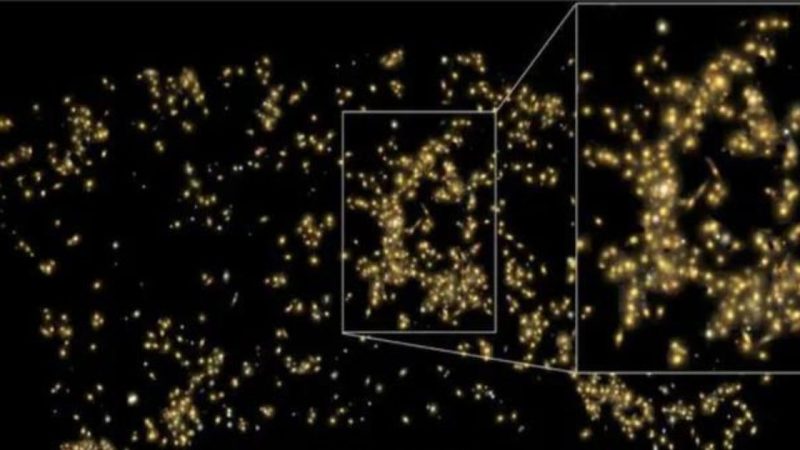Scientists spot galaxy supercluster with about 26 Quadrillion Suns mass

Can you imagine the numbers in a quadrillion? It’s a mind-boggling figure 1 with 15 zeros after it, one that stretches our comprehension beyond the limits of everyday understanding. Now, imagine a structure in the cosmos with a mass equivalent to 26 quadrillion suns. It sounds like a creation of science fiction, but in the vast expanse of the universe, such wonders exist as scientific reality. Named after the Estonian astrophysicist Jaan Einasto, this colossal structure sits approximately 3 billion light-years away from our planet.
However, the Einasto Supercluster, named in honor of Estonian astrophysicist Jaan Einasto, one of the discoverers of the large-scale structure of the universe, isn’t the only impressive one. Among the 662 recently discovered superclusters, it shines as one of the biggest. Even the regular supercluster in this group is incredibly huge, with a mass of about 6 quadrillion times that of the Sun, and it spans vast distances, usually about 200 million light-years wide. To give you an idea, the average supercluster is 2,000 times larger than our Milky Way galaxy.
A valuable clue to understand dark matter
These superclusters stand out even more because of their strong gravitational pull. Although they contain a lot of mass, the galaxies inside them are spread out more thinly compared to other parts of the universe. Still, these superclusters have a powerful gravitational force that affects how matter, including dark matter, is spread out within them.
Dark matter, a mysterious material making up most of the universe’s mass, cannot be seen using regular methods because it doesn’t interact with light. However, its effects are strongly noticeable in superclusters, affecting how they form and change over time. Scientists aim to understand dark matter better by observing how it influences the movement of galaxies within these superclusters, hoping to reveal its secrets and understand its impact on the universe.
However, there are still more mysteries in the universe beyond dark matter. Scientists are puzzled by another phenomenon called dark energy, which is a mysterious force causing the universe to expand faster and faster. By studying galaxies in these superclusters, scientists have gained interesting clues about how dark energy and gravity interact. It’s surprising that galaxies in superclusters seem to be moving apart more slowly than expected, suggesting a complicated relationship between dark energy and gravity.
But universe expansion mystery has taken a new turn with a recent theoretical paper that proposes that the ever-accelerating expansion of the universe might be powered by a mysterious form of matter known as ‘unparticles’.
Einasto supercluster’s unbelievable size, mass
The Einasto Supercluster is truly remarkable in both its vast size and immense mass, containing an astonishing equivalent to about 26 quadrillion times the sun. To grasp its scale, consider that it would take light 360 million years to traverse from one side to the other. Understanding these massive galaxy groupings could help us learn more about the universe’s origins and workings, including mysterious phenomena like dark matter and dark energy.
While other superclusters aren’t as big as the Einasto, they’re still substantial. Scientists from Tartu Observatory found that the average supercluster in this group weighs about 6 quadrillion solar masses and stretches about 200 million light-years across. To put it in perspective, if the sun were the size of a golf ball, a supercluster would be nearly as heavy as Mount Everest. The galaxies within these superclusters are denser than those outside, showing that they grow differently. Even though the galaxies are spread out across vast distances, they still have a strong gravitational pull, affecting even dark matter, which we can’t see directly.
Studying these superclusters could also help us understand dark energy, or its new term ‘unparticles’, which push galaxies apart faster and faster. Interestingly, galaxies within superclusters seem to move apart slower than expected, suggesting a complex relationship between dark energy and gravity.
The team’s findings were published in the Astrophysical Journal on November 23, 2023.


